2017 QBE International Festival of Speed
With Boris Mihailovic – Images by Colin Rosewarne
It’s quite bizarre walking around Sydney Motorsport Park when it’s so crowded. I’ve actually never seen so many people there. And no, I didn’t go to the Guns’n’Man-Tights. So in terms of crowd numbers, the newly-named International Festival of Speed was an unmitigated success.
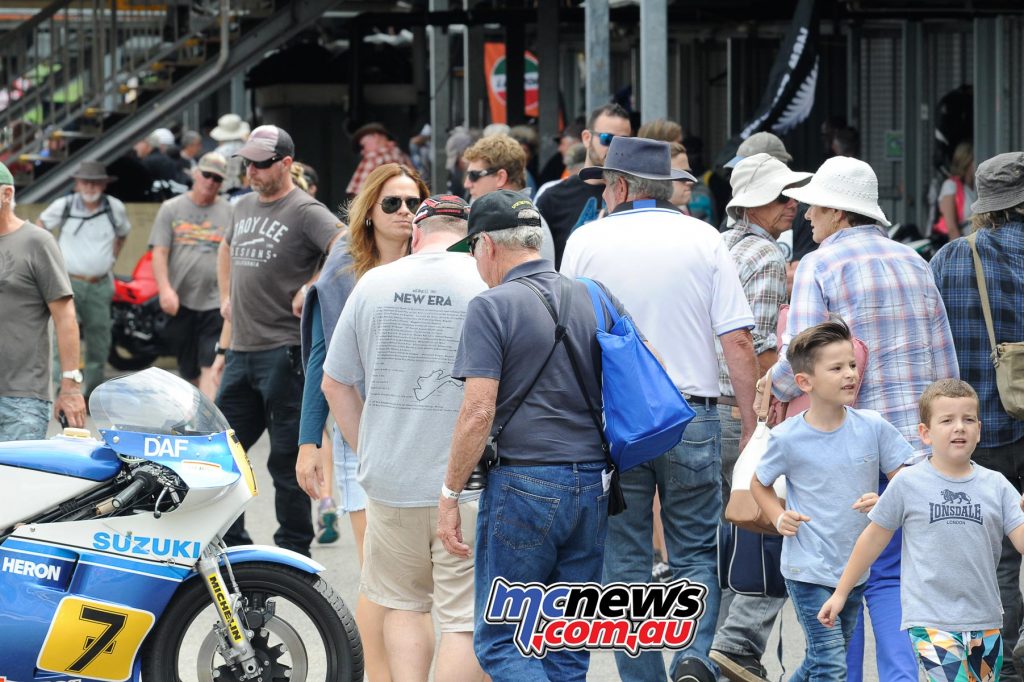
Formerly known as the Barry Sheene Festival of Speed, the four-day-long event re-named itself following discussions with lawyers from the Sheene family estate.
I spoke to Stephen Broholm, one of the event’s promotors, about this name-change. I didn’t want to. I wanted to know how many Laverdas had been brought in from Italy and why Franki Chili was in his underpants just off to my left. But Stephen did not know the answers to those issues, and wanted to clear the air about the name-change instead.
“I really don’t care,” I said. “You know Robbie Phillis joked it was now the Nobody’s Festival of Speed? I thought that was funny. Maybe you should have called it that?”

Stephen felt I should focus on what we had, and not what I had hoped for. Anyway, social media had been speculating the name-change had been prompted by the Sheene family demanding vast sums of money for Barry’s name to be used by the PCRA.
According to Stephen, it wasn’t quite like that.
“We were approached after last year’s event by a lawyer who insisted we had to meet certain conditions if we wanted to use Barry’s name,” he explained. “Essentially, we could only use sponsors associated with Barry Sheene. So Suzuki, Dainese, AGV… this made running the event cost-prohibitive.”
So InterFoS was born.
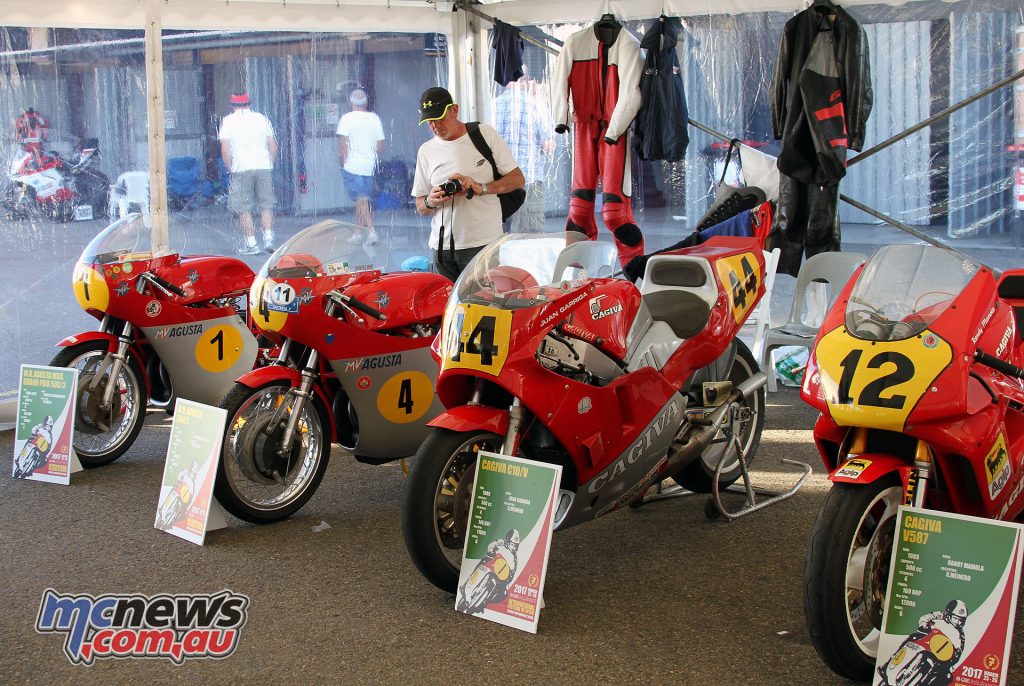
And Agostini was coming to Sydney. And crazy, priceless old racebikes were coming with him. I could not summon a shit about what its name was.
But I was keen to spend three days stalking Ago and came home stinking of two-stroke and awe.
Which is pretty much what happened. The glories I saw and the wonders I heard will stay with me for a long time.
I saw Pierfrancesco Chili and Piero Laverda in their underpants.
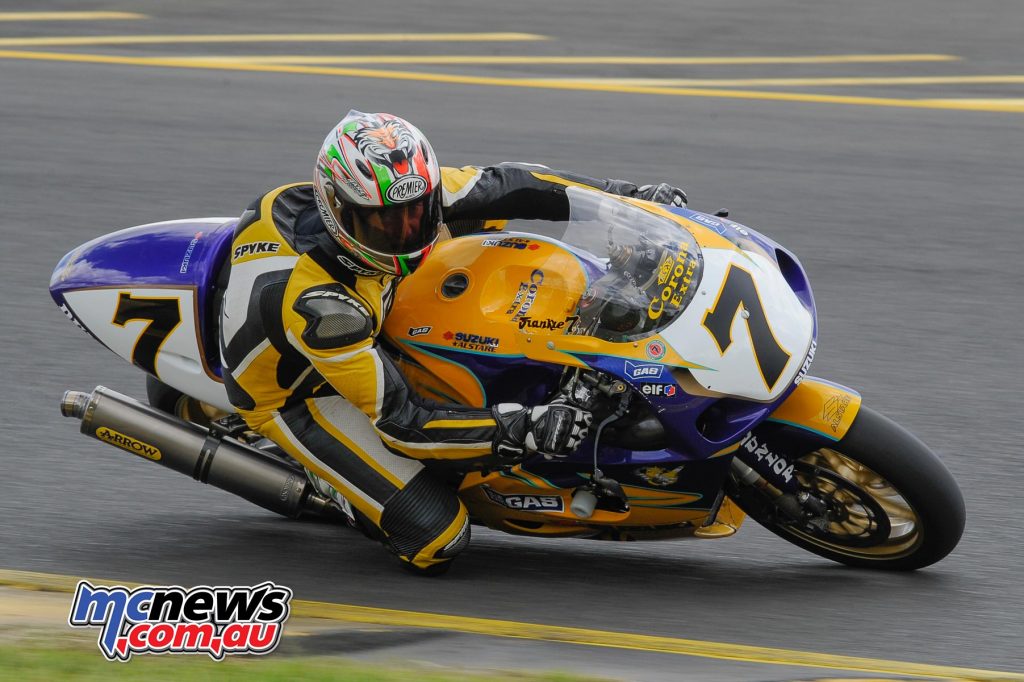
I saw the stunning array of Laverda endurance racers Piero had brought over from Italy – including the impossibly rare V6 – and I watched them run on the track. The same track they shared with Giacomo Agostini and his inestimable thundering 500 triple MV Agusta.
They, in turn, were sharing the track with Kevin Magee, Graeme Crosby, Steve Parish, Jeremy McWilliams, Maria Costello, and Troy Bayliss – all riding an array of classic racing motorcycles, only one of which pulled a wheelie down the length of the main straight, but then Mr Bayliss’s Ducati is somewhat newer than the others.
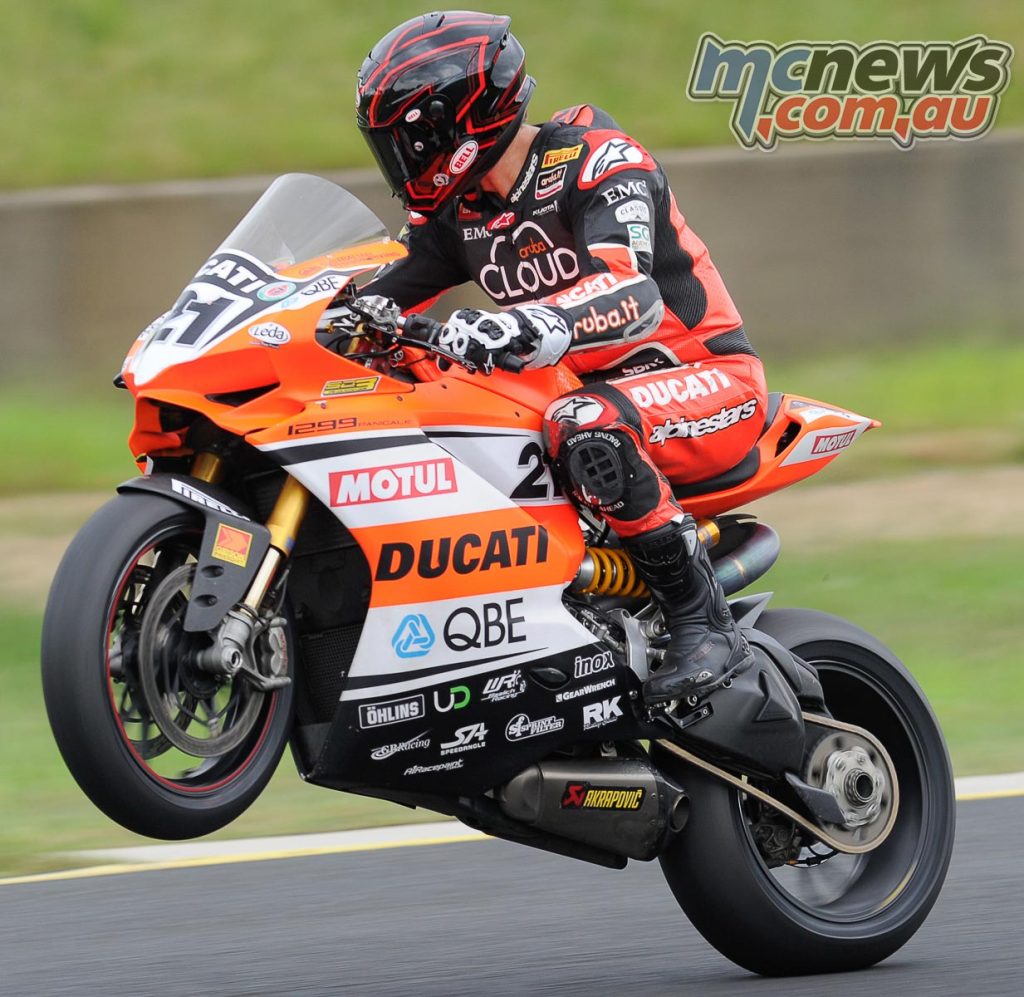
It struck me as kind of strange that among these giants of the sport, there was no Mick Doohan, Wayne Gardner, or Casey Stoner. It also struck me as strange that while Cam Donald, Peter Martin and Jim Scaysbrook got a run with the Legends, there was no Steve Martin, Robbie Phillis, Mark Willis, Chris Vermuelen, Mat Mladin, Shannon Johnson, Krusty Ferguson, or any of the many, many local blokes who’ve made their bones here and around the world.

What a series of parade laps that would have made.
Still, there were some heavy hitters actually racing over the weekend. Sloan Frost and Beau Beaton where having a crack, and I could probably spend the next hour listing all the entrants in all the many classes, but to be perfectly honest, this wasn’t about the racing for me.

This was about the bikes, without a doubt. There was an absolute treasure trove of jaw-dropping rarities to see and hear.
Bikes I had never seen in the flesh before and will probably never see in the flesh again. Bikes I had only ever read about, or seen in grainy old pictures. Bikes which had been ridden at phenomenal speeds by men with balls bigger than moons on racetracks now deemed “too dangerous” for motorcycles to race on.
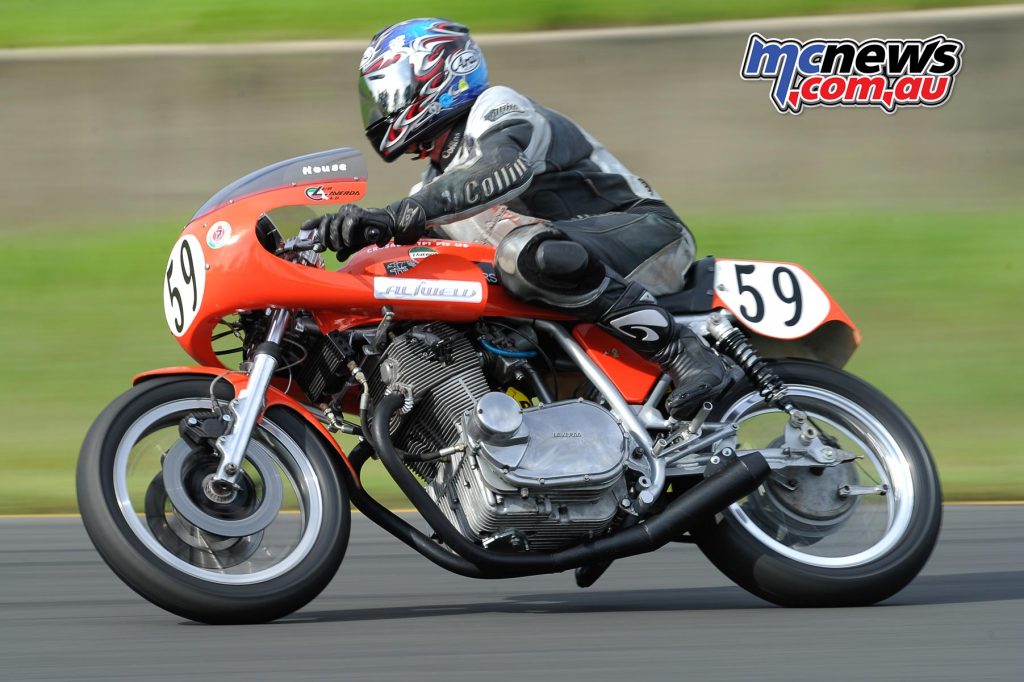
The theme of this year’s InterFos was “Italian”, according to Stephen Broholm (and each year there will be a different theme, and I told him I didn’t much care about that, either), but it certainly appeared to be all about Laverda, which was fine by me.
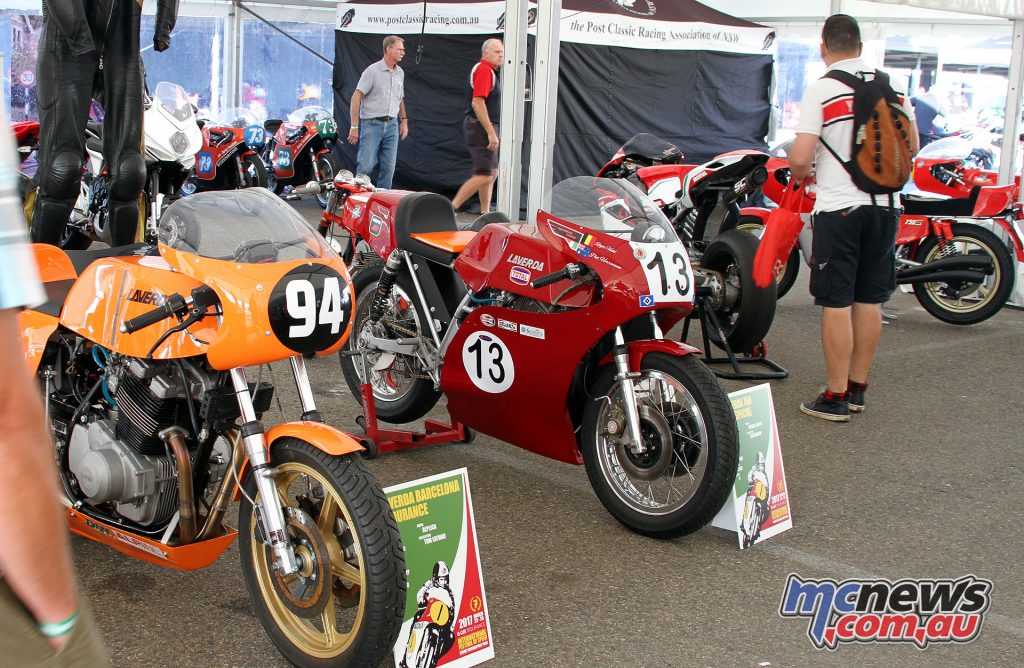
Laverda was the Orange Crusher before KTM took up the colour. I was one of those dreamy teenagers who really coveted a Jota, but went and bought a Suzuki instead. And felt guilty about that. So for me to see the machinery Piero Laverda had brought with him was a dreamlike experience.
I wondered if it was possible to speak to the scion of the House of Laverda?
“Of course,” he said when I asked. “But please give me five minutes. It is like a sauna.”

Pierro is not a young man or a small man, and he’d been out on the track riding one of the endurance racers. He was sweating like a bison, but like all road-racers he had no problem getting his leathers off in crowded places.
“We had a rare opportunity to be invited here,” he smiled after he’d put some pants on.
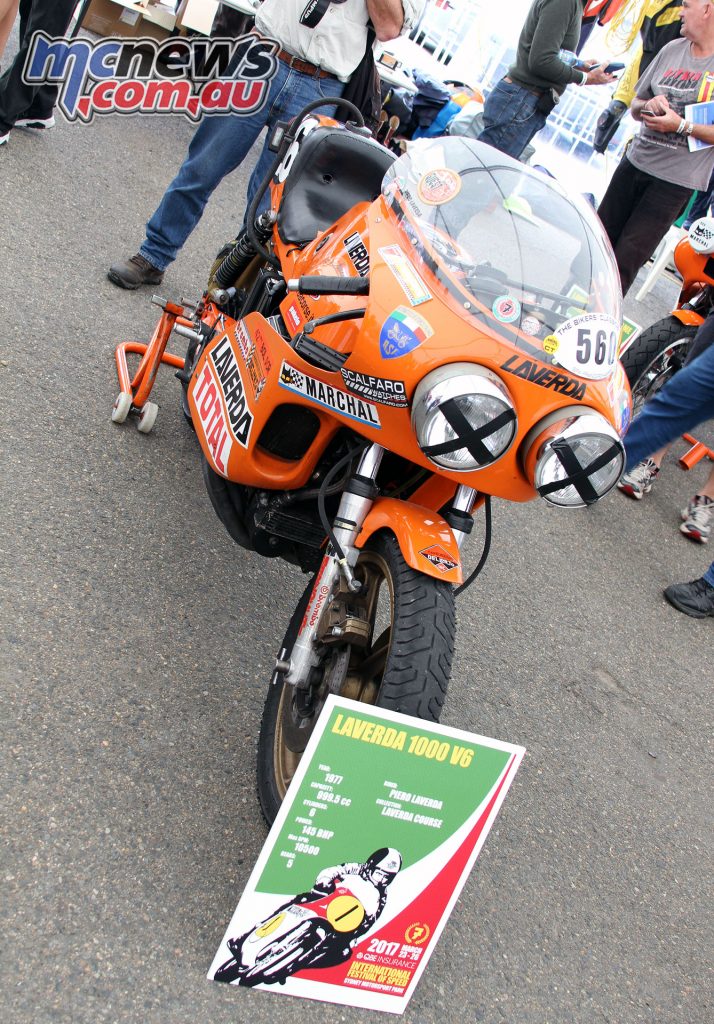
Pierro was clearly pleased by just how many fans the marque has in Australia.
“We decided to bring five bikes,” he went on. “Some of the most representative of our collection. We know that in your country there are many Laverda friends. So we give them the chance, first of all, to see the V6, a milestone of the hypersport motorcycle. Then we brought a genuine endurance 1000 three-cylinder with the space-frame, which was racing in ’75 and ’76. The rider was Marco Luchinelli , who was later a champion with Suzuki. Then we brought a classic three-cylinder 1974 endurance type, and two tiny bikes, one 500 Monte endurance and a new one we shall unveil tonight, based on the 750SFC.”
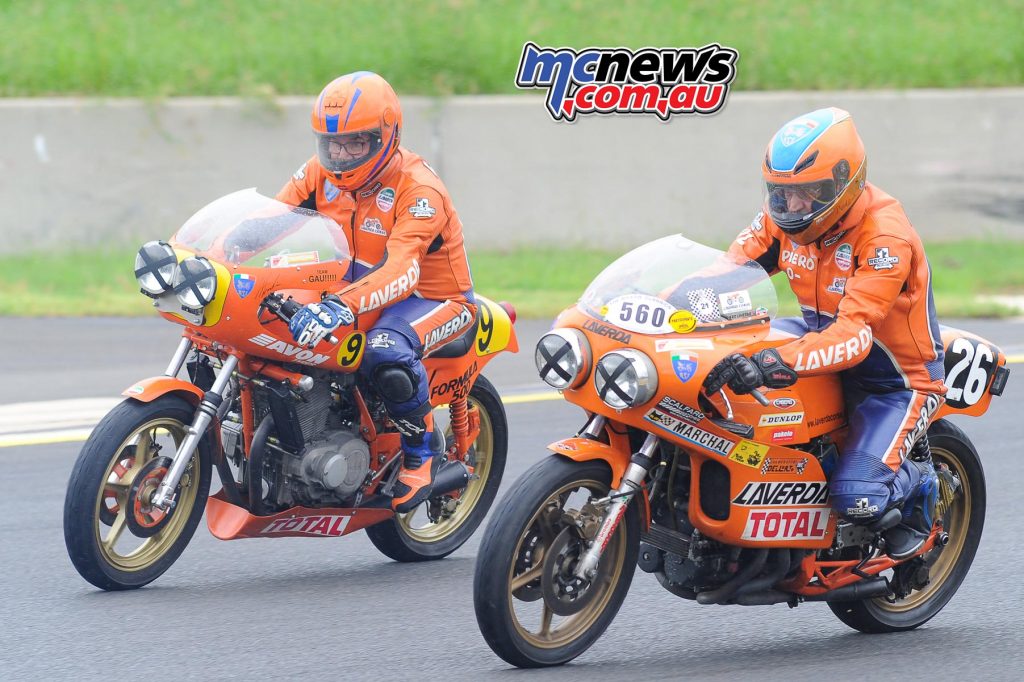
I cut straight to the chase. His smalltalk was nice, but there was just one thing I needed to know from Mr Laverda.
“As a fan, I’m really quite sad Laverda isn’t producing new bikes. Is there any hope that one day this might change?” I asked.
Pierro nodded. He knew my pain.
“You know,” he said, “You have to consider that motorcycling is very much a return on investment thing for us. People who own bikes, love very much the sport and the bike. But from the business point of view, for the factory that produces the bike, every model needs a huge investment. And if you have a small production run, say 5000 to 10,000, it is quite difficult to compete with the big factories from Japan. This was the reason why the majority of the medium-sized motorcycle companies in Italy like Laverda, Moto Guzzi, Benelli, Moto Morini back in the ’70s when the commercial activity from Japan began to be very aggressive, every one of us had heavy finance problems. It is not true that we do not know how to produce a bike. We know very well. The problem is the return on investment is very low.”
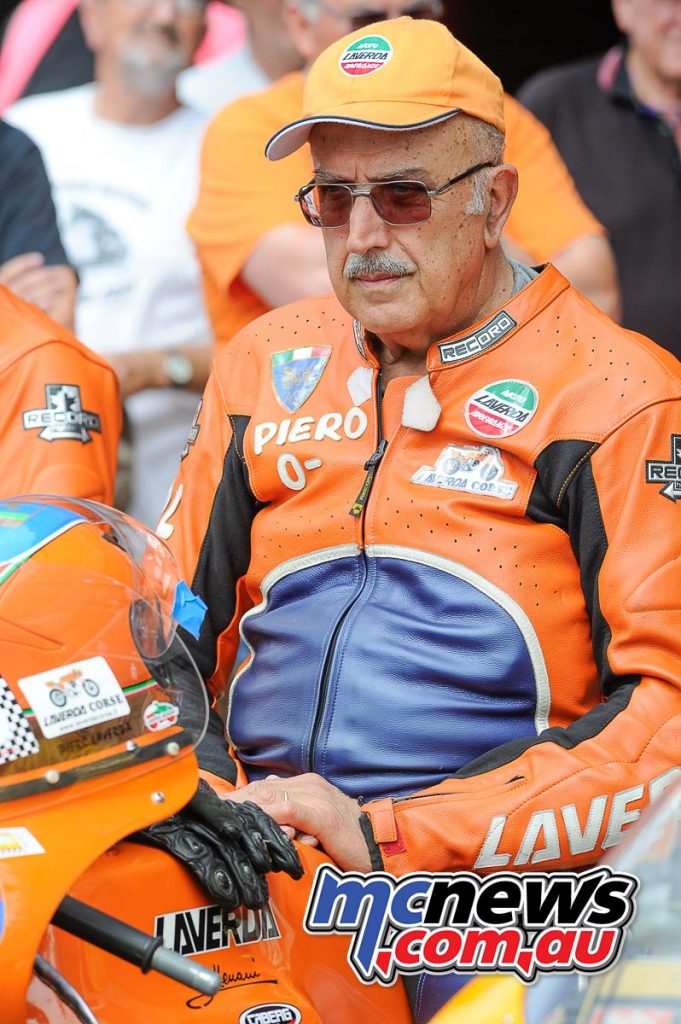
So, no. Shit. I moved on to other questions.
“So you have ridden all of the bikes here?” I asked.
“Yes, sure” Piero said.
“Which one is your favourite?”
“Now or in the past?” he laughed. “I was born in the motorcycle factory founded by my father. I had my first bike at eight years of age. I have been riding all my life. Production bikes, racing bikes, prototypes, dirt bikes, everything. I would say that I am not as young as I was in the past, and I have become more clever, and for me the best balance between riding for pleasure, safety and handling, is the 500 twin.”
I must have looked at him funny when he said that.
“In the twisty roads of the Dolomites,” he grinned at me, “You really enjoy that kind of bike. The big Laverdas are good for long distances like in your country. But in our tiny country, the 500 in my opinion, is the best compromise. And when we go all over Europe for events like these and I have to train on the track, I always ride my little 500.”
I took all this on board, thanked him for his time and saw that Agostini was having a quiet moment. It was very cool to see Ago kicking back in a fold-out chair behind a herd of priceless MV Agustas.
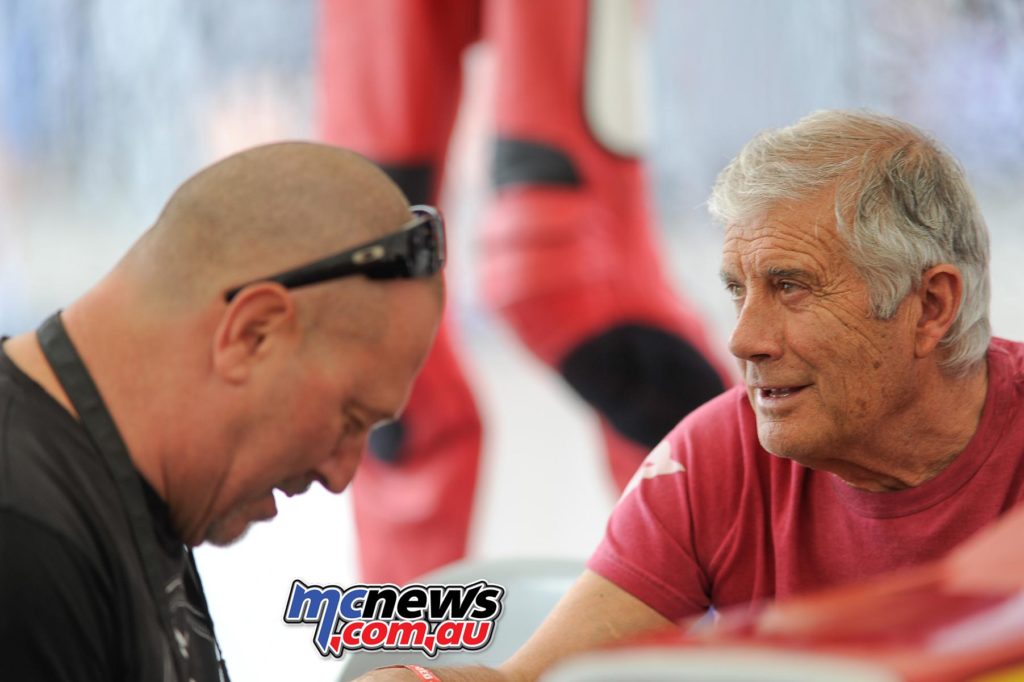
“No problem,” he smiled when I came up and asked him if he had a few moments to spare so I could ask dumb questions. Quite frankly, I was in too much awe of the man to ask him anything but dumb questions…
“So, Mr Agostini,” I began, “Out of all the bikes you’ve ever ridden, which is the one you’ve most enjoyed?”
“All the ones I’ve won on,” he grinned.
“What are you on this weekend?”
“This weekend I ride the 500 three-cylinder.”
“This is the same bike you won the championship on a million years ago? The very same one?”
He nodded, still smiling. “Yes, it’s very old. But it’s very fast.”
“How fast? What’s the top speed on it?”
“285,” he said. He wasn’t smiling when he said that, either.
“Jesus Christ!” I blasphemed. “That’s crazy fast for such an old bike.”
He nodded. “Yes,” he allowed. “It is.”
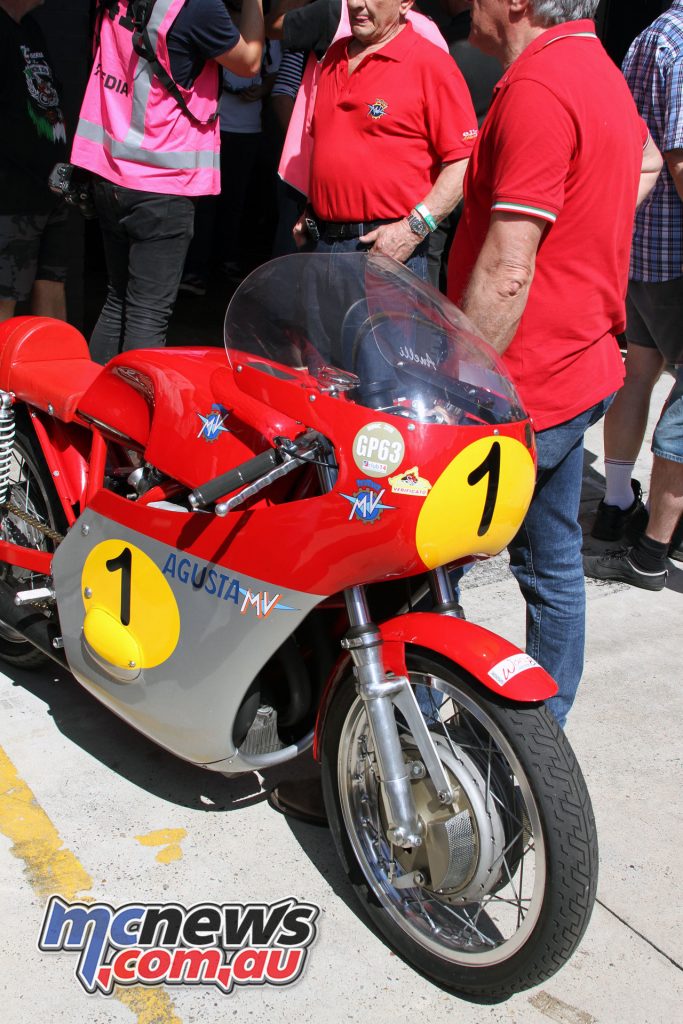
“So with all these parade laps you do all over the world, and considering the fact that once a racer always a racer, do you like ever, you know, get into it a bit with the others?”
He grinned again. “I don’t try very hard. I stopped racing and it’s not necessary to try 100 per cent. Now I do exhibition. I have nothing to prove.”
“No shit,” I said. “Now tell me your predictions for MotoGP this year.”
He shook his head. “I think it is a very, very hard season,” he said. “I think we watch a very nice battle this year, because many riders can win. So it is difficult for me to know who can win. We must wait and see.” He knew what I was going to say next.
“But Rossi…”
He nodded. “Rossi… Still he try very hard. I think the younger riders this year, Vinales, Marquez, but Valentino has a lot of experience. And is very professional. He will make a good race every time.”
I thanked him and wandered off.
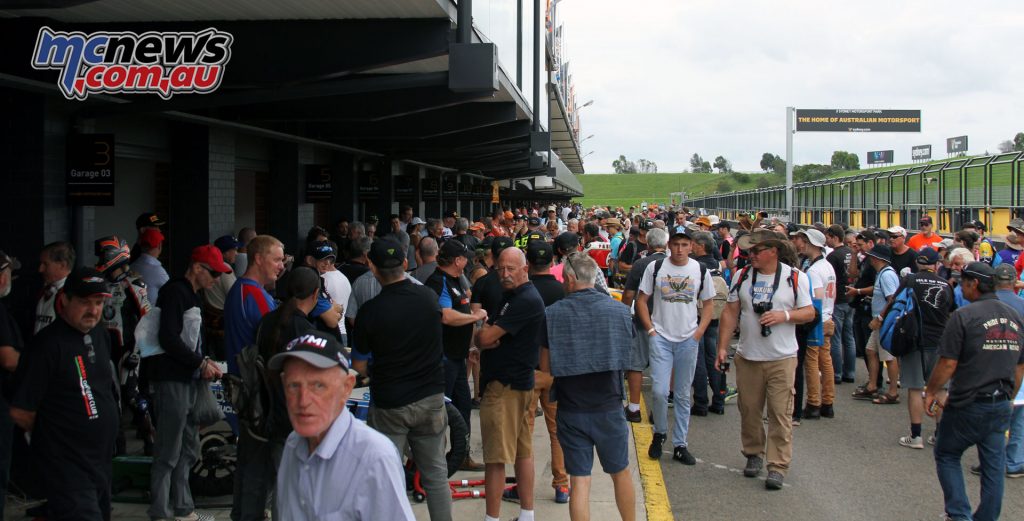
I had just chatted with Giacomo Agostini about Rossi. I felt special. But I wasn’t, really. From what I saw that weekend, lots of people chatted with him. In fact, lots of people chatted with all the Legends. Maybe they even blasphemed in front of him and said “shit”.
Still, it did feel pretty special for me and I guess that’s what counts.
Apart from the stunning panoply of exotic racing machinery everywhere I looked, having accessibility to Ago was just great.
And it was also great that from time to time, those exotic racing bikes would be started, crowds would gather, two-stroke smoke would fill the air and Sydney Motorsport Park was the only place I wanted to be right then.
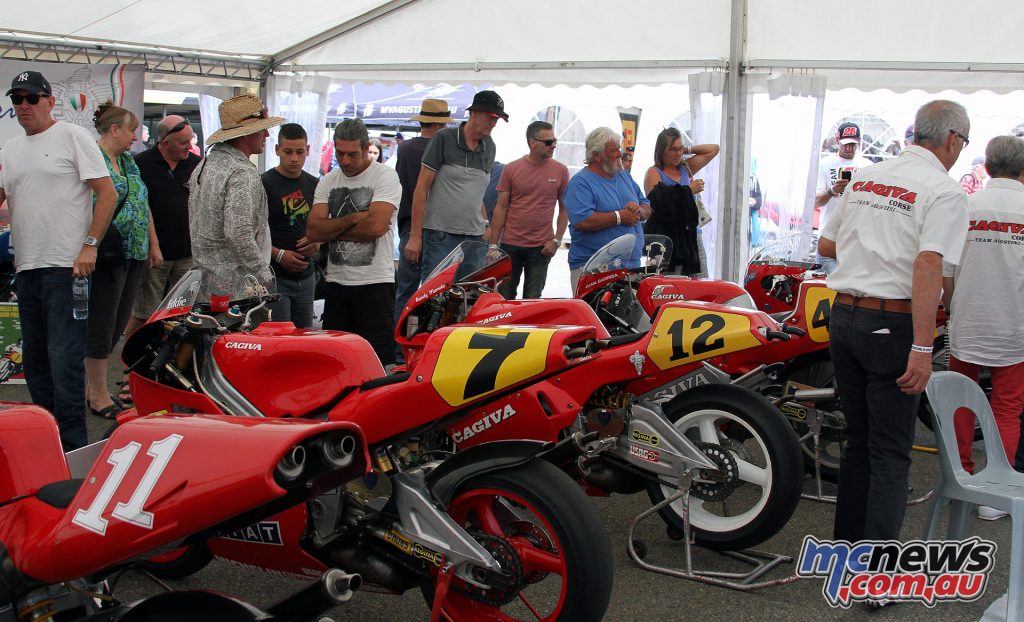
It was not so much a time-warp. It didn’t feel time-warpy. I wasn’t suddenly cast back to a ’70s Magny Cours or an ’80s Isle of Man. None of the famous blokes had their race faces on, and there was none of the real-race intensity there would have been back when they were actually racing.
They were, instead, all quite rightly resting on their laurels, and we were all quite rightly celebrating their achievements and paying our respects.
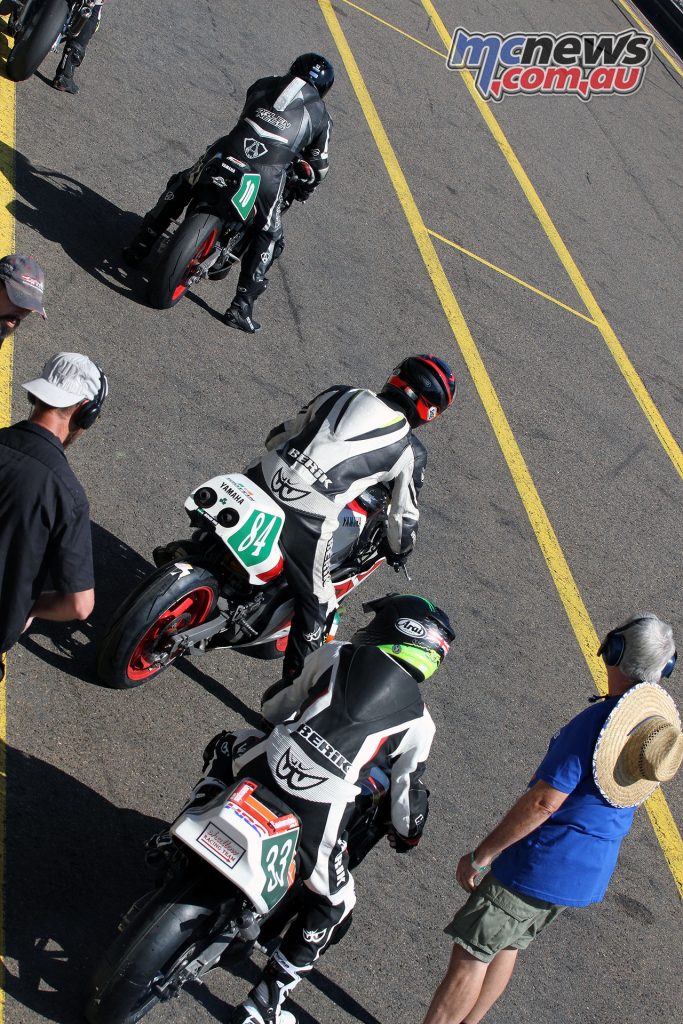
Elsewhere, the race faces were certainly there. This was, after all, a race-meeting for the PCRA. And as such, there was lots of post-classic racing – which is essentially and gloriously crashing and burning motorcycles, sweating old blokes covered in oil and intensely busy pit garages.
But like I said, that’s not what it was about for me.
I attend race meetings all the time.
Giacomo Agostini, Graeme Crosby, Troy Bayliss and Franki Chili aren’t there.
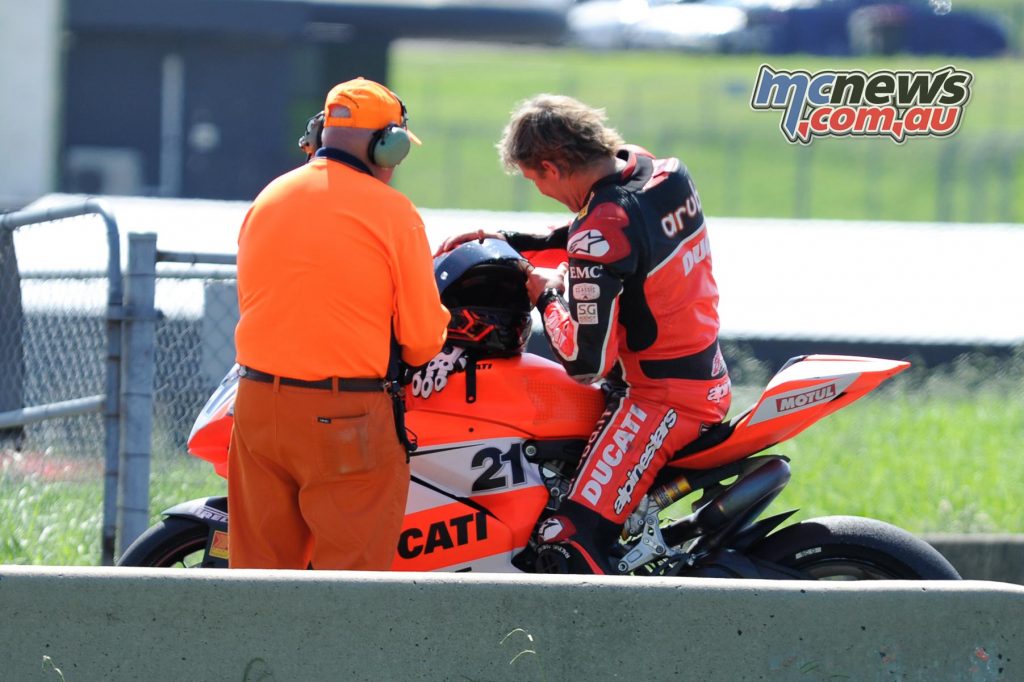
And Piero Laverda isn’t warming up a V6 racer.
























